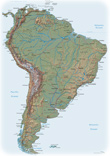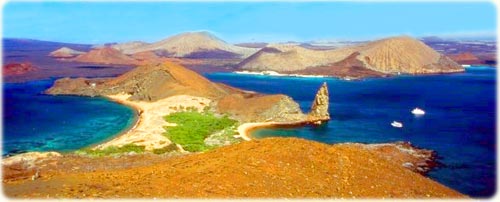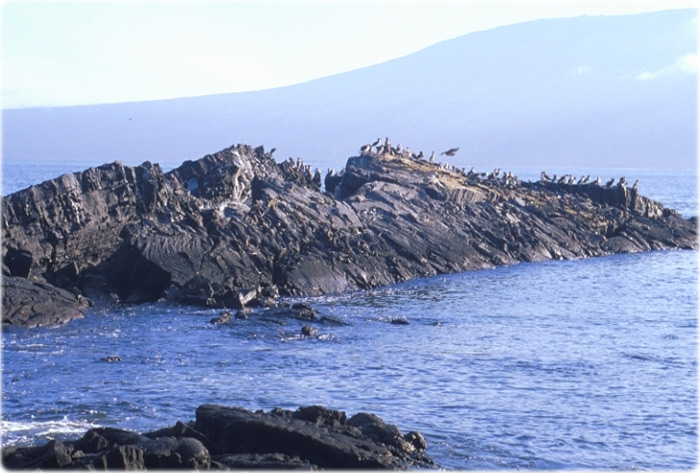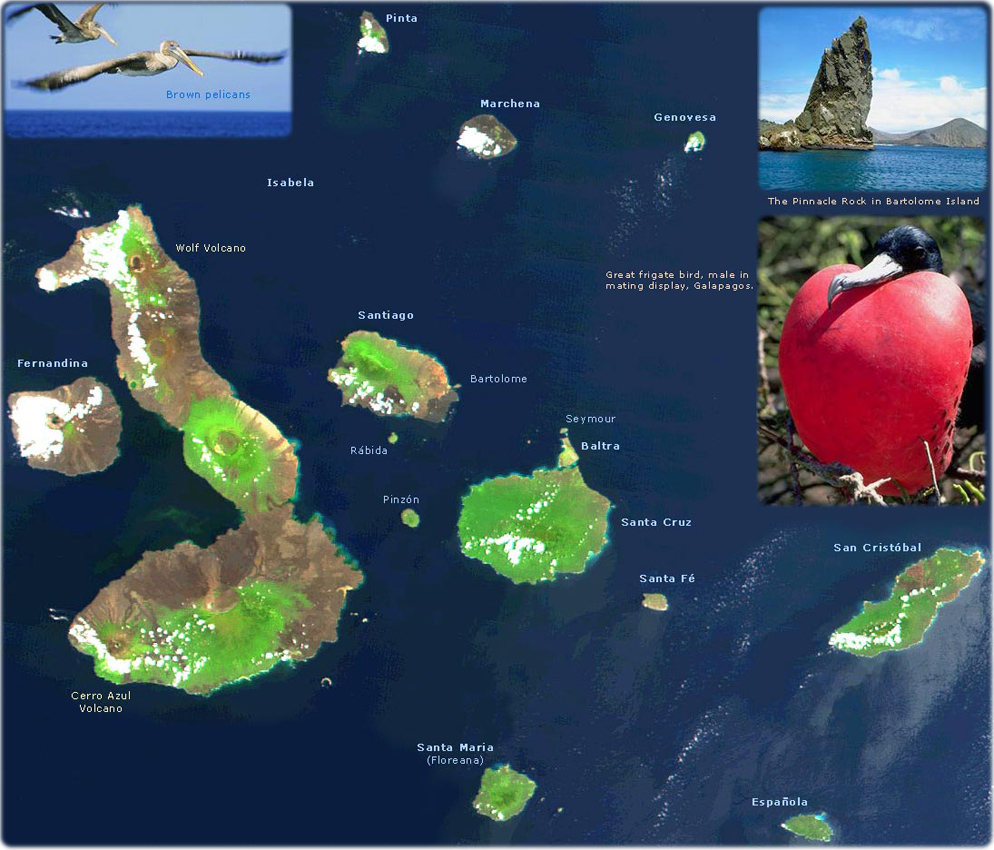
Galapagos Islands
The Galapagos is a group of volcanic islands in the Pacific Ocean. Some volcanoes in the islands are still active. They constitute a province of Ecuador and are protected as a wildlife sanctuary, since 1935, where birds coexist with iguanas, sea lions and several other animals. The principal islands are Isabela, San Cristóbal, San Salvador, Santa María and Santa Cruz. The islands population is about 15,000. Puerto Baquerizo Moreno, on San Cristóbal, is the administrative center. In 1978, it was declared a UNESCO World Heritage Site.
The Isolation of the Galapagos in the Pacific Ocean allowed the development of a peculiar ecosystem. Many varieties of wildlife are not found anywhere else, including six species of giant tortoises that give the islands their Spanish name. The observation of the wildlife in Galapagos produced important inferences to the development of the Charles Darwin's theory of evolution. The English naturalist arrived at the archipelago in the expedition of the Beagle, between 1831 and 1836.
The Galapagos Islands was discovered in 1535, by the bishop of Panama Tomás de Berlanga, when its ship drifted in a trip to Peru. He named the islands of "Las Encantadas". In his writings, the bishop emphasized the great number of giant tortoises (galapagos in Spanish) there were in the islands.
Galapagos attracts more than 60 thousand tourists annually and is considered the second biggest wildlife marine reserve of the world, only behind the Great Barrier Reef, in Australia.
More: Map of Galapagos ►
The Bartolome Island, Galapagos.

Cormorants in Galapagos.
The Galapagos Islands, which are part of Ecuador, sit in the Pacific Ocean about 1000 km west of South America. As the three craters on the largest island (Isabela Island) suggest, the archipelago was created by volcanic eruptions, which took place millions of years ago. Unlike most remote islands in the Pacific, the Galapagos have gone relatively untouched by humans over the past few millennia. As a result, many unique species have continued to thrive on the islands. Over 95 % of the islands’ reptile species and nearly three quarters of its land bird species cannot be found anywhere else in the world. Two of the more well known are the Galapagos giant tortoise and marine iguanas. The unhindered evolutionary development of the islands’ species inspired Charles Darwin to begin The Origin of Species eight years after his visit there. To preserve the unique wildlife on the islands, the Ecuadorian government made the entire archipelago a national park in 1959 (source: NASA, 2002).

◄ Ecuador
|
Copyright © Geographic Guide - Travel Pacific Ocean. |

Blue-footed booby in Galapagos.
